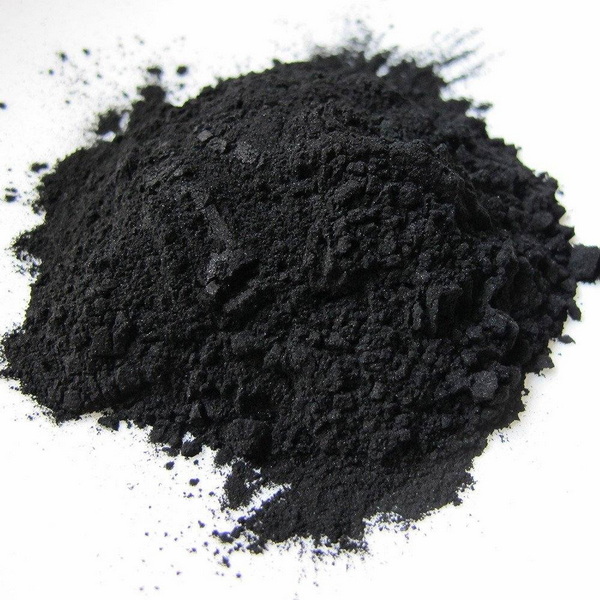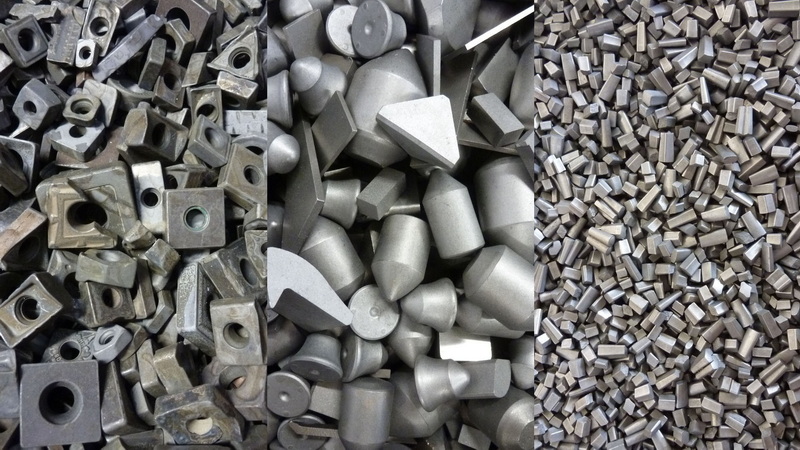Content Menu
● Introduction
● What Is Tungsten Carbide?
● Chemical and Physical Properties
>> Chemical Structure
>> Physical Properties
>> Hardness and Durability
>> Thermal and Electrical Conductivity
● How Is Tungsten Carbide Made?
>> Synthesis of Tungsten Carbide Powder
>> Cemented Tungsten Carbide (Sintered Form)
>> Shaping and Finishing
● Major Applications of Tungsten Carbide
>> Cutting Tools and Machining
>>> Types of Cutting Tools
>> Mining and Drilling
>> Ammunition and Armor-Piercing Projectiles
>> Wear-Resistant Parts
>> Precision Instruments and Medical Devices
>> Nuclear Technology
● Tungsten Carbide in Jewelry
>> Benefits in Jewelry:
>> Limitations:
>> Popular Styles and Trends
● Advantages and Limitations
>> Advantages
>> Limitations
● Environmental Impact and Sustainability
>> Mining and Resource Use
>> Recycling and Reuse
>> Sustainable Practices
● Future Trends and Innovations
>> Advanced Coatings and Composites
>> Additive Manufacturing
>> Medical and Electronic Applications
>> Environmental Innovations
● Conclusion
● FAQ
>> 1. What is the difference between tungsten and tungsten carbide?
>> 2. Why is tungsten carbide used in cutting tools?
>> 3. Is tungsten carbide jewelry safe to wear?
>> 4. Can tungsten carbide be recycled?
>> 5. How does tungsten carbide compare to diamond?
● Citations:
Tungsten carbide is a remarkable material that has revolutionized modern industry, engineering, and even jewelry. In this comprehensive article, we will explore the meaning of tungsten carbide, its chemical and physical properties, methods of synthesis, diverse applications, and frequently asked questions. Along the way, you will find a wealth of images to illustrate the fascinating world of tungsten carbide.

Introduction
Tungsten carbide is not just a technical term reserved for scientists or engineers. It is a material that shapes the tools we use, the jewelry we wear, and the technology that powers our world. But what exactly is tungsten carbide? Why is it so important, and what makes it unique? This article will answer those questions and more, providing a detailed, image-rich exploration of this extraordinary compound.
What Is Tungsten Carbide?
Tungsten carbide (chemical formula: WC) is a compound consisting of equal parts tungsten and carbon atoms. In its most basic form, it appears as a fine gray powder, but it can be pressed and formed into solid shapes through a process called sintering. This transformation allows tungsten carbide to be used in a variety of applications, from industrial machinery and cutting tools to jewelry and even armor-piercing ammunition.
Colloquially, tungsten carbide is often simply called "carbide" in industrial settings. Its unique combination of hardness, toughness, and chemical stability makes it one of the most versatile materials available to modern engineers and designers.
Chemical and Physical Properties
Chemical Structure
- Formula: WC
- Crystal Structure: Exists in both hexagonal (α-WC) and cubic (β-WC) forms.
- Bonding: Tungsten and carbon atoms are strongly bonded, giving the material its exceptional hardness.
Physical Properties
| Property | Value/Description |
| Hardness (Mohs) | 9.0–9.5 (almost as hard as diamond) |
| Density | ~15.6 g/cm³ (twice as dense as steel) |
| Young's modulus | 530–700 GPa (about 3x steel) |
| Melting point | 2,870 °C (5,198 °F) |
| Boiling point | 6,000 °C (10,832 °F) |
| Electrical resistivity | 0.2 μΩ·m (similar to some metals) |
| Color | Gray with a bluish tinge |
Hardness and Durability
Tungsten carbide is renowned for its exceptional hardness, ranking just below diamond on the Mohs scale, and for its incredible resistance to wear and abrasion. This makes it ideal for applications where durability is crucial.
Thermal and Electrical Conductivity
Tungsten carbide also exhibits good thermal conductivity, which is beneficial in cutting tools that need to dissipate heat quickly. Its electrical conductivity is lower than that of pure metals but higher than many ceramics, making it suitable for certain electronic and industrial applications.
How Is Tungsten Carbide Made?
Synthesis of Tungsten Carbide Powder
Tungsten carbide powder is produced by reacting tungsten metal or tungsten oxide with carbon at high temperatures (1,400–2,000 °C). The most common method is the direct carburization of tungsten powder:
W + C → WC
Alternative methods include chemical vapor deposition and fluid bed processes, which allow for precise control over particle size and purity.
Cemented Tungsten Carbide (Sintered Form)
To create solid, usable shapes, tungsten carbide powder is mixed with a metallic binder—usually cobalt. The mixture is pressed into molds and then sintered at high temperatures, causing the binder to melt and fuse the tungsten carbide grains together.
This process creates a composite material that combines the hardness of tungsten carbide with the toughness of the binder metal. The proportion of binder can be adjusted to balance hardness and toughness for specific applications.
Shaping and Finishing
After sintering, tungsten carbide components can be further shaped using diamond grinding wheels, as conventional machining is ineffective due to the material's hardness. Polishing, coating, and surface treatments are also applied depending on the final use.
Major Applications of Tungsten Carbide
Tungsten carbide's unique properties make it indispensable across a wide range of industries.
Cutting Tools and Machining
Tungsten carbide is most famously used in cutting tools for machining metals and other hard materials. Its hardness allows for faster cutting speeds and longer tool life compared to traditional steel tools.
Types of Cutting Tools
- End mills and milling cutters
- Lathe inserts
- Saw blades
- Router bits
- Drill bits
These tools are essential in manufacturing, automotive, aerospace, and construction industries.
Mining and Drilling
In mining, tungsten carbide is used in drill bits, chisels, and tunnel boring machines. Its resistance to abrasion and impact makes it ideal for breaking through rock and other tough materials.
Tungsten carbide is also used in oil and gas drilling, where it withstands harsh conditions and extends the operational life of drilling equipment.
Ammunition and Armor-Piercing Projectiles
Tungsten carbide is used in the cores of armor-piercing ammunition due to its density and hardness, which allow it to penetrate armored targets more effectively than steel.
Wear-Resistant Parts
Components such as valve seats, bushings, and bearings benefit from tungsten carbide's wear resistance, especially in high-stress environments like oil and gas drilling.
Precision Instruments and Medical Devices
Tungsten carbide is used in the manufacture of high-precision instruments such as measuring gauges, surgical tools, and dental burs. Its ability to maintain sharpness and resist wear is crucial in these fields.
Nuclear Technology
Tungsten carbide has been used as a neutron reflector in nuclear reactors and research, thanks to its high density and unique nuclear properties.

Tungsten Carbide in Jewelry
Tungsten carbide has become a popular material for rings and other jewelry, especially for those seeking durability and a modern look. Unlike pure tungsten, which is too brittle for intricate designs, tungsten carbide can be crafted into rings, bracelets, and more.
Benefits in Jewelry:
- Highly scratch-resistant
- Maintains polish and shine
- Hypoallergenic (generally, though binders may vary)
- Modern, metallic appearance
Limitations:
- Can be brittle if dropped on a hard surface
- Cannot be resized due to hardness
Popular Styles and Trends
Tungsten carbide jewelry is available in a wide range of finishes, including brushed, polished, and matte. It is often combined with inlays of gold, silver, or even wood and carbon fiber for a unique, contemporary look.
Advantages and Limitations
Advantages
- Extreme Hardness: Nearly as hard as diamond, making it ideal for cutting, drilling, and abrasion-resistant applications.
- High Density: Twice as dense as steel, giving tools and jewelry a solid, substantial feel.
- Wear Resistance: Outlasts most other materials in high-wear environments.
- Heat Resistance: Maintains strength at high temperatures, suitable for high-speed machining.
- Corrosion Resistance: Resists most acids and oxidation below 500–600 °C.
- Long Service Life: Reduces replacement frequency and maintenance costs.
Limitations
- Brittleness: While extremely hard, tungsten carbide can be brittle and may fracture under sharp impact.
- Difficult to Machine: Its hardness makes it challenging to shape or modify once sintered.
- Cost: More expensive than standard steels, especially when using cobalt as a binder.
- Limited Flexibility: Not suitable for applications requiring flexibility or ductility.
Environmental Impact and Sustainability
Mining and Resource Use
Tungsten and cobalt, the primary elements in tungsten carbide, are mined from the earth, which can have significant environmental impacts. Responsible sourcing and recycling are essential to minimize ecological damage.
Recycling and Reuse
Tungsten carbide is highly recyclable. Scrap carbide is collected from used tools and industrial waste, then processed to recover tungsten and cobalt. This reduces the need for new mining and lowers the environmental footprint.
Sustainable Practices
Many manufacturers now emphasize sustainable sourcing and recycling programs. The use of recycled tungsten carbide not only conserves resources but also reduces the energy required for production.
Future Trends and Innovations
Advanced Coatings and Composites
Research continues into new binders and nanostructured composites to further enhance the properties of tungsten carbide. Advanced coatings, such as diamond-like carbon (DLC), are being developed to increase wear resistance and reduce friction.
Additive Manufacturing
Additive manufacturing (3D printing) with tungsten carbide is an emerging field, allowing for complex geometries and customized components that were previously impossible to produce.
Medical and Electronic Applications
Tungsten carbide's biocompatibility and conductivity are being explored for use in medical implants, electronic contacts, and even in the semiconductor industry.
Environmental Innovations
Efforts to develop eco-friendly binders and improve recycling efficiency are ongoing, aiming to make tungsten carbide an even more sustainable material for future generations.
Conclusion
Tungsten carbide is a cornerstone of modern industry, engineering, and even fashion. Its unique combination of hardness, density, and wear resistance makes it invaluable for cutting tools, mining equipment, ammunition, and jewelry. The synthesis of tungsten carbide—melding tungsten and carbon at high temperatures—produces a material that rivals diamond in hardness and outperforms steel in durability. However, its brittleness and cost must be considered in design and application.
From the drill bits that bore through rock to the rings that symbolize commitment, tungsten carbide's impact is everywhere. As research continues, new uses and improved formulations will only expand its role in our world. Its recyclability and the ongoing push for sustainable manufacturing ensure that tungsten carbide will remain an essential material for decades to come.

FAQ
1. What is the difference between tungsten and tungsten carbide?
Tungsten is a pure metallic element known for its high melting point and density. Tungsten carbide is a compound of tungsten and carbon, offering much greater hardness and wear resistance, making it suitable for cutting tools and jewelry.
2. Why is tungsten carbide used in cutting tools?
Tungsten carbide's exceptional hardness allows it to cut through tough materials and maintain a sharp edge much longer than traditional steel tools. It also withstands higher temperatures during machining.
3. Is tungsten carbide jewelry safe to wear?
Yes, tungsten carbide jewelry is generally safe and hypoallergenic. However, the binder metal (often cobalt or nickel) can cause skin reactions in rare cases. Always check the binder used if you have metal allergies.
4. Can tungsten carbide be recycled?
Yes, tungsten carbide can be recycled. Scrap carbide is often collected and processed to recover tungsten and cobalt, reducing environmental impact and material costs.
5. How does tungsten carbide compare to diamond?
While diamond is harder (Mohs 10), tungsten carbide is nearly as hard (Mohs 9–9.5) and much tougher than most other materials. Diamond is preferred for applications requiring the utmost hardness, but tungsten carbide is often more practical and cost-effective for industrial use.
Citations:
[1] https://en.wikipedia.org/wiki/Tungsten_carbide
[2] https://cen.acs.org/materials/Chemistry-Pictures-Tungsten-carbide-slice/103/web/2025/02?sc=230901_cenrssfeed_eng_latestnewsrss_cen
[3] https://www.britannica.com/science/tungsten-carbide
[4] https://www.alamy.com/stock-photo/tungsten-carbide.html
[5] https://dictionary.cambridge.org/dictionary/english/tungsten-carbide
[6] https://www.embr.com/blogs/news/what-does-tungsten-vs-tungsten-carbide-really-mean
[7] https://www.dictionary.com/browse/tungsten-carbide
[8] https://www.dymetalloys.co.uk/what-is-tungsten-carbide
[9] https://www.sciencedirect.com/topics/physics-and-astronomy/tungsten-carbide
[10] https://www.collinsdictionary.com/dictionary/english/tungsten-carbide
[11] https://grafhartmetall.com/en/what-is-tungsten-carbide/
[12] https://stock.adobe.com/search?k=tungsten+carbide
[13] https://www.istockphoto.com/photos/tungsten-carbide
[14] https://www.shutterstock.com/search/tungsten-carbide
[15] https://www.freepik.com/free-photos-vectors/tungsten-carbide
[16] https://www.istockphoto.com/photos/carbide
[17] https://www.shutterstock.com/search/tungsten
















